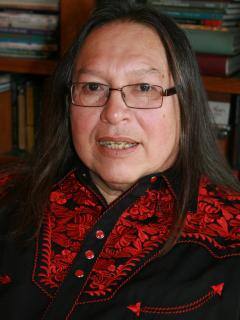DL: What did you learn about Dakota history while you were growing up?
WL: I learned oral history from my dad. Stories that his mom had told him about life then, about how there were Indian villages all the way up the Minnesota River Valley. That was before the war. She was four years old and was brought into Camp Release in that summer/fall of 1862. Her and her mother and brothers took a walk to Lower Sioux. That’s where the trials were held. Coincidentally her future husband’s cabin [log house store] was used as François LaBatte… If you know history you know that François LaBatte, the trials were held at his store. I’ll tell you a story about that later. She told him about the horrors of that walk. It’s pretty well told about some of the horrors. One of them was walking through this town and they threw hot water on them in December. She remembers that.
DL: Was this your great-grandmother?
WL: No, my grandma. My grandma was four years old in 1862. My dad was born in 1900.
DL: Your dad was born in 1900?
WL: 1900 yes.
DL: Your grandma was a young girl…
WL: A little girl, very little.
DL: Which town did they go through?
WL: I don’t dare say because I might get it wrong and historians will say, “Well if that’s wrong, then the story is untrue.”
DL: But the water is true.
WL: Yes, but I understand there’s a controversy on some of those things where some historians are trying to prove that that didn’t happen in New Ulm and happened somewhere else. So Indian people look at it this way: what’s important is that the event happened. Whether it happened in this town or that town is immaterial to Indian people. What is important is that it happened. I guess from a Wasichu standpoint they would want to know that it was not “my” town. It was that other town. [Laughter] So there are two conflicting viewpoints and whether they’ll ever come to an understanding…

